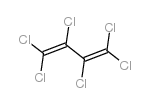Regucalcin down-regulation in rat kidney tissue after treatment with nephrotoxicants.
Arianna Chiusolo, Rossella Defazio, Alessandro Casartelli, Nicola Bocchini, Michele Mongillo, Edoardo Zanetti, Patrizia Cristofori, Andrea Trevisan
Index: Toxicol. Lett. 182(1-3) , 84-90, (2008)
Full Text: HTML
Abstract
Gene expression of regucalcin (Rgn), a calcium-binding protein, was investigated in kidney of male Wistar rats treated with proximal tubule segment-specific nephrotoxicants, namely hexachloro-1:3-butadiene (HCBD), specific for S(3) segment (pars recta) and potassium dichromate (chromate) specific for S(1)-S(2) segments (pars convoluta), according to age of animals and dose of chemicals. In the age-dependent study, male Wistar rats were treated with a single injection of HCBD (100mg/kg b.w. i.p.) or chromate (25 mg/kg b.w. s.c.) at 5 weeks or 12 weeks of age; in dose-response study, rats were treated with a single injection of three doses of HCBD (25, 50, and 100 mg/kg b.w. i.p.) or chromate (8, 12.5, and 25mg/kg b.w. s.c.) at 8 weeks of age. Forty-eight hours after treatment, Rgn and glutamine synthetase (GS) activity in kidney cortex, blood urea nitrogen (BUN) and plasma creatinine were measured; light microscopy was performed also. The results show that young rats are less susceptible to chromate (severe necrosis is evident only in adult rats), whereas age does not influence HCBD nephrotoxicity. Rgn is down regulated by HCBD at both age points, but not by chromate at 5 weeks of age. In addition, HCBD causes down-regulation of Rgn from the low dose in 8-week-old rats, whereas chromate causes the same effect at the high dose only. GS activity in kidney cortex shows a similar behavior, even if sensitive to low doses of chromate also, whereas BUN and creatinine increase after the high dose of both chemicals only. Accordingly, light microscopy shows a segment-specific, dose-dependent increase of severity of damage caused by the chemicals. Rgn gene expression appears a sensitive genomic marker to evaluate the renal impairment caused by chemicals and its down-regulation seems to be related to damage, early or already established, to S(3) segment of the proximal tubule.
Related Compounds
| Structure | Name/CAS No. | Molecular Formula | Articles |
|---|---|---|---|
 |
Hexachloro-1,3-butadiene
CAS:87-68-3 |
C4Cl6 |
|
Developing structure-activity relationships for the predicti...
2010-07-19 [Chem. Res. Toxicol. 23 , 1215-22, (2010)] |
|
Optimizations of packed sorbent and inlet temperature for la...
2014-08-22 [J. Chromatogr. A. 1356 , 221-9, (2014)] |
|
An integrated treatability protocol for biotreatment/bioreme...
2003-04-01 [J. Environ. Sci. Health. A. Tox. Hazard. Subst. Environ. Eng. 38(4) , 597-607, (2003)] |
|
Reducing ingress of organic vapours into homes situated on c...
2004-04-01 [Environ. Technol. 25(4) , 443-50, (2004)] |
|
Nephrotoxicity of hexachloro-1:3-butadiene in the male Hanov...
2012-06-01 [J. Appl. Toxicol. 32(6) , 417-28, (2012)] |